Do you want to reduce the time your staff spends monitoring and adjusting the performance of your network? Do you need a better way to manage and control the amount of water purchased from a supplier? Do you need to use your existing basins and pipes more efficiently because your city is not ready to fund new infrastructure projects? Using an autonomous, predictive software to improve network efficiency is a new concept for most network administrators. Listed below are examples and use cases explaining how the Global Predictive ControllerTM can help your network run more efficiently and reduce costs. Please select one of the links below to learn more:
Significantly reduce pressure fluctuations in the network
Automatically identify low volume leaks and water utilization outside of normal consumption patterns
Reduce the need for large fire reserves. Automatically optimize basin usage during emergency events
Automatically optimize the use of multiple sources of water
Automatic aeration of basins / management of stand times during periods of low demand
Optimize pipes with limited flow capabilities (or bi-directional pipes)
Homogeneous use of all basins in the network / Reduce pressure drops due to competing inflows
Optimization of stored water supply after source water pollution event
Case Study: Reduce Pipe Burst Frequency by Reducing Pressure Fluctuations in Older ( >35 years) Systems
Problem:
Will a reduction of pressure fluctuations throughout the network reduce pipe bursts in older networks? Below is a chart showing inflows to a basin before and after the installation of the GPC. Note the more gradual flow as the system automatically and continuously calculates how much water the basin will need throughout the course of the day.
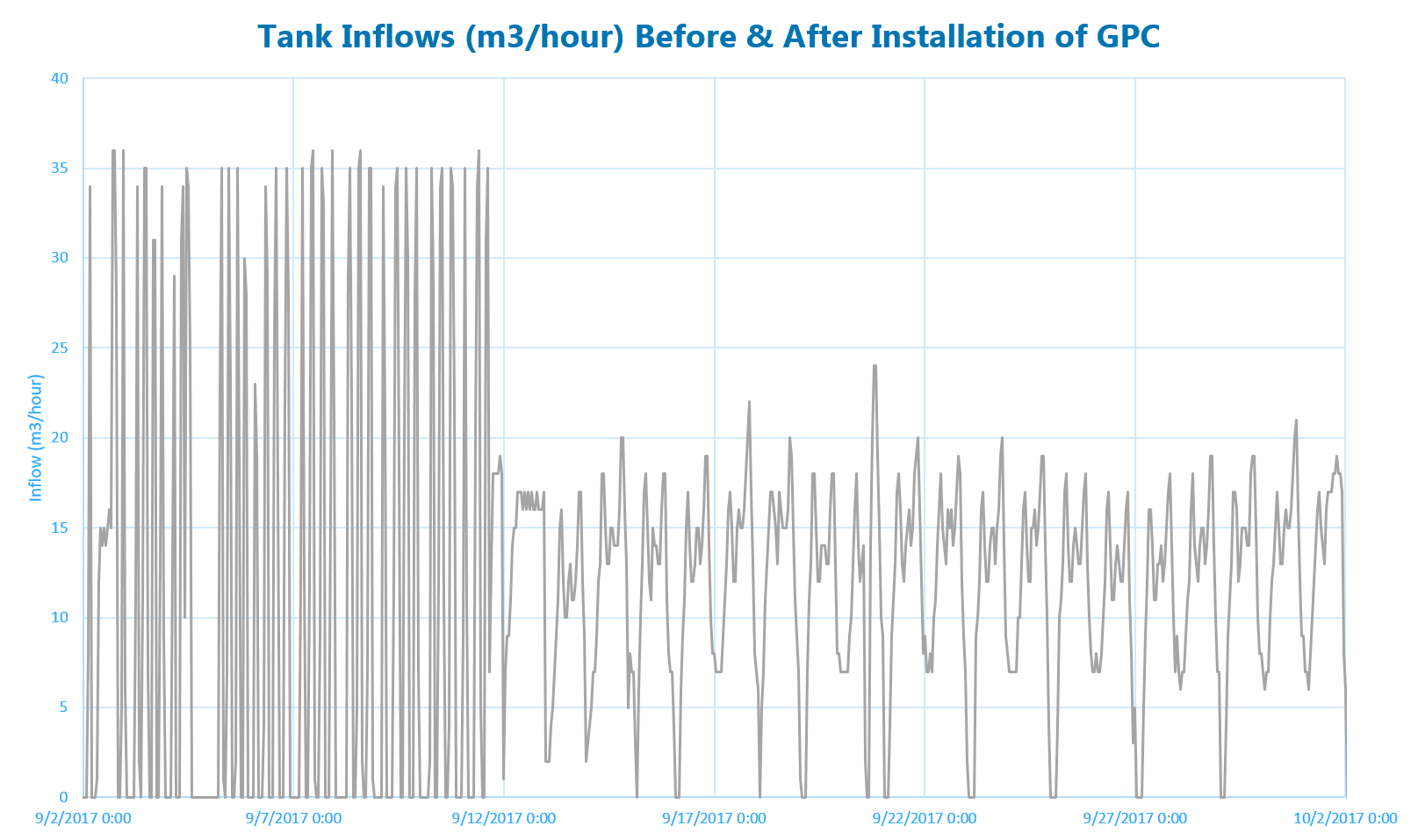
Study Results:
- Burst frequency reduced (estimated 1 pipe burst per year reduction per 100 km)
- Cost of damage and emergency repairs avoided (savings costs estimated between 10.000,00€ to 10 Million €)
- RTC4Water's GPC system "smooths out" pressure fluctuations across the network via continous flow management and "peak shaving"
Case Study: Leak Detection (between sources and basins only)
Problem:
Small leaks are hard to detect and staff may not always have time to search for them. Can an automated system identify flow rates that fall outside of normal parameters? There are many ways to look for leaks, but why not automate the process and let your staff work on more important tasks?
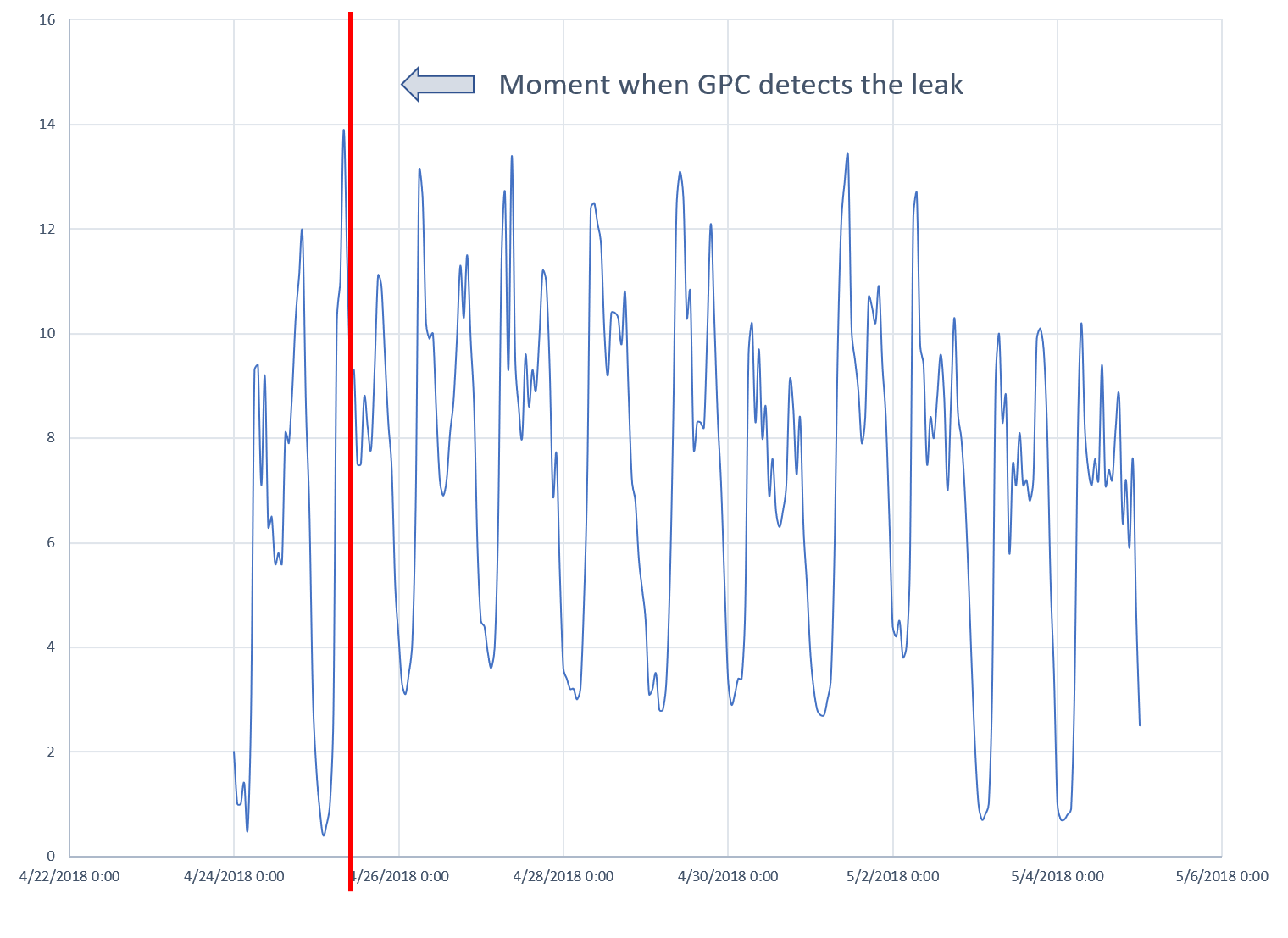
Solution:
- Leak probability detection gives your staff an early indication of the possibility of a leak -without constant monitoring
- Automatic consumption alerts are sent to your team when flow rates fall outside of standard profiles
Case Study: Automatically Optimize Basin Usage During Emergency Events
Problem:
How can you automatically maintain a security of supply during an emergency event while at the same time ensuring that only the minimum amount of water needed to maintain the network is drawn from your water supplier? This example demonstrates how one basin reacted to increased demand due to a fire (solid red line). The second basin in the network (solid blue line) automatically reacts and returns to its normal profile once the network begins to return to its normal consumption profile. Please download the case study PDF for more information.
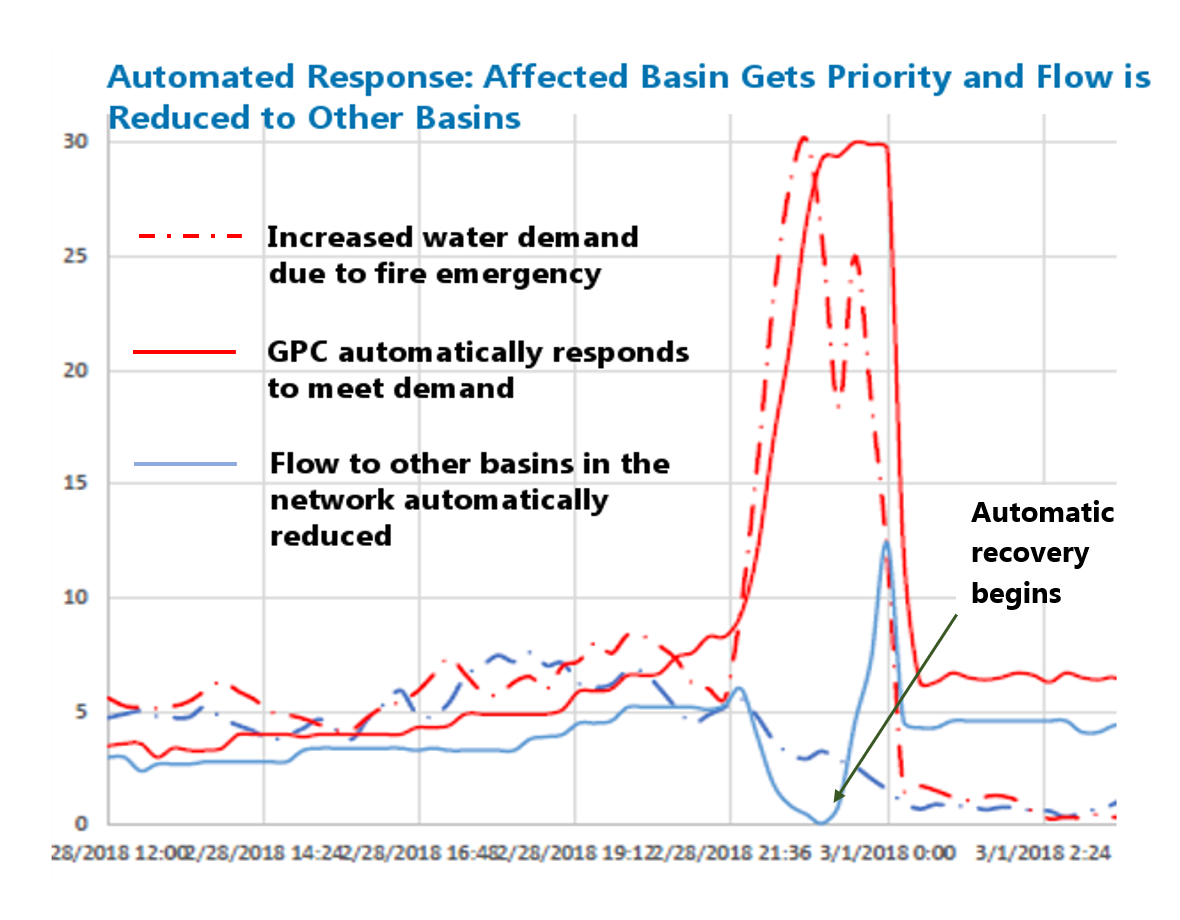
Please note that some data elements in this graph have been compressed to more clearly demonstrate the events of the day
Solution:
- Basin under stress never reached its minimum volume level: system automatically responded to the change in demand within 15 minutes
- No need for staff to react to, or to monitor the event. Automatic response to increased demand while at the same time limiting inflow to other basins
- Automatic network recovery: system automatically began to return all basins to normal, pre-planned capacity once the emergency event was over
Example: Optimizing Use of Local Water Sources
Problem:
Efficient use of local sources can be complicated. Some sources are mildly polluted and need to be mixed with non-polluted water. For other sources, only a specific quality of water can be drawn before depleting or damaging the source. Our client's optimization goal: to always maintain a ratio of 2M3 of purchased water to 1M3 of well water.
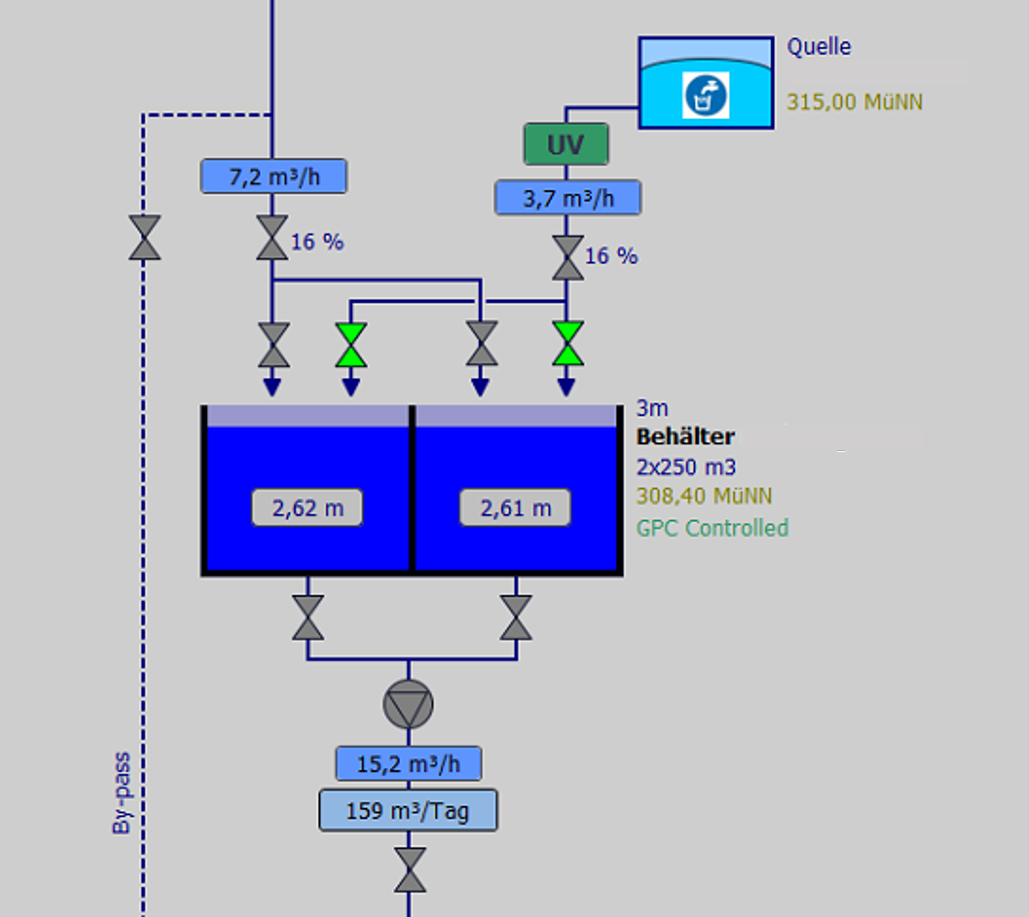
Solution:
- Client was able to reduce the amount of water purchased from his supplier (up to 30%) without special programming or increased staff workload.
Example: Improved Water Quality
Problem:
Aeration of basins (condensation) and the management of stand times are time consuming processes that can lead to additional maintenance costs if not performed correctly. Can this process be fully automated and free up staff to work on other tasks?
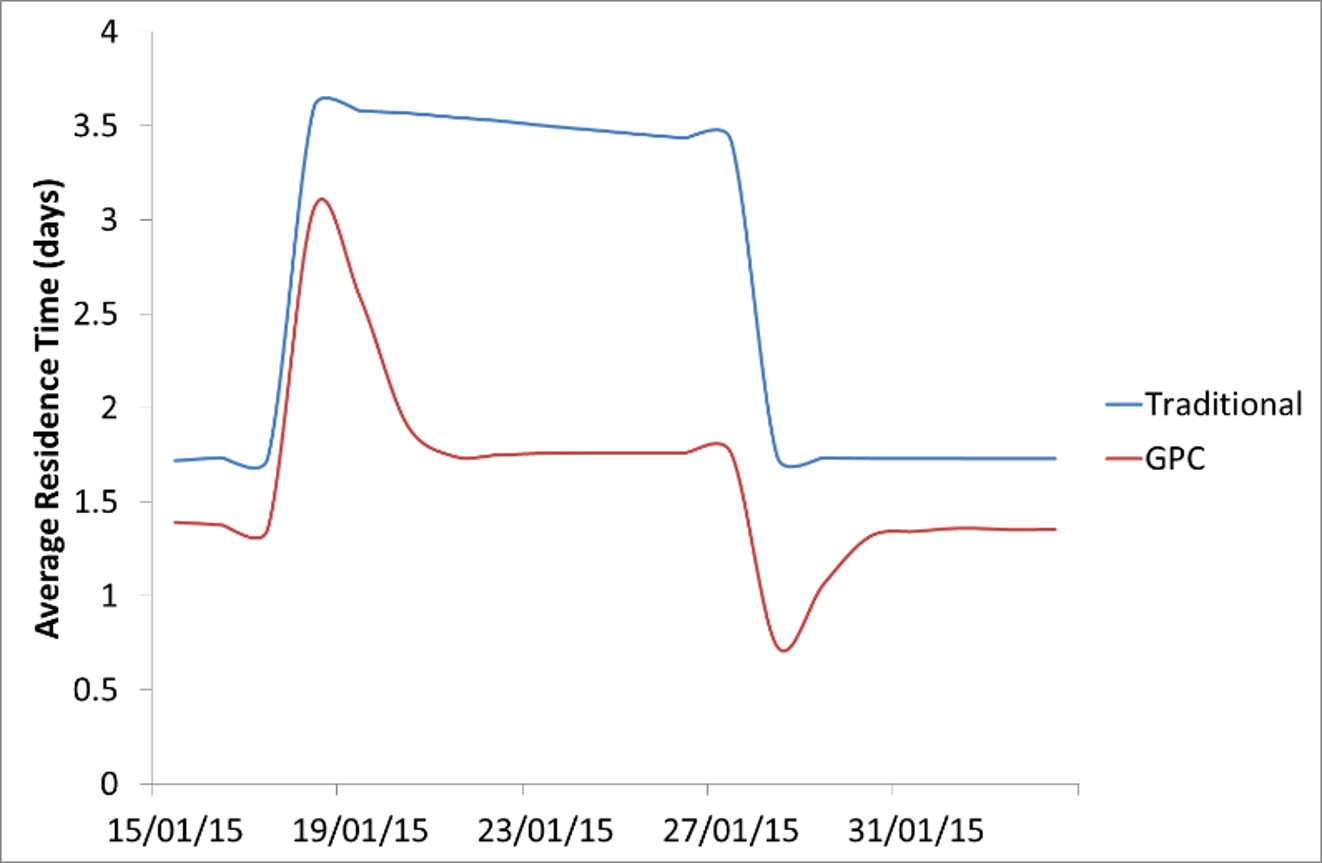
Please note that this scenario demonstrates an accelerated scenario whereby the consumption has decreased over one day instead of several months (winter to summer).
Solution:
- Automated management of stand times can be established for each basin
- Oversized basins can be operated with a lower volume and still achieve the same goals
Example: Optimize Pipes with Limited Flow Capabilities
Problem:
One of our clients needed to remove a key storage basin used to buffer consumption for a significant period of time. We quickly calculated that the peak demand from the network would exceed the capacity of the pipe. How can we optimize the delivery of water throughout the day so that customers have the water they need during peak periods?
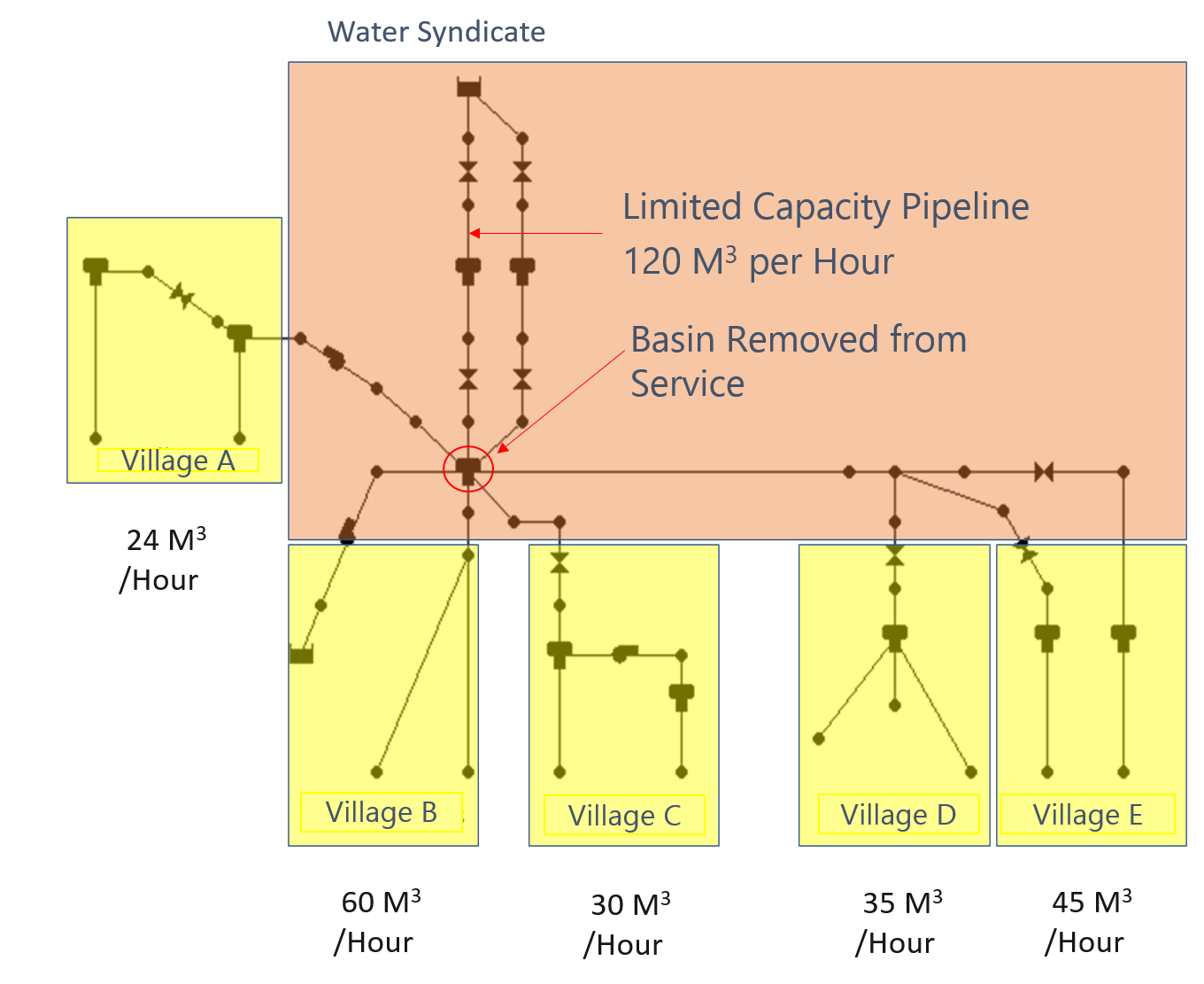
Solution:
- Real-time analysis and control of the network means that demand can be anticipated and water delivered taking into account any restraints
- Client is able to maintain the same level of service to his customers without additional costs
Case Study: Reducing Pressure Drops Due to Competing Inflows
Problem:
Competing inflows to multiple basins result in insufficient flow and may risk empty basins (security of supply). Network optimization means that all basins can be used homogeneously and without operator intervention or monitoring.
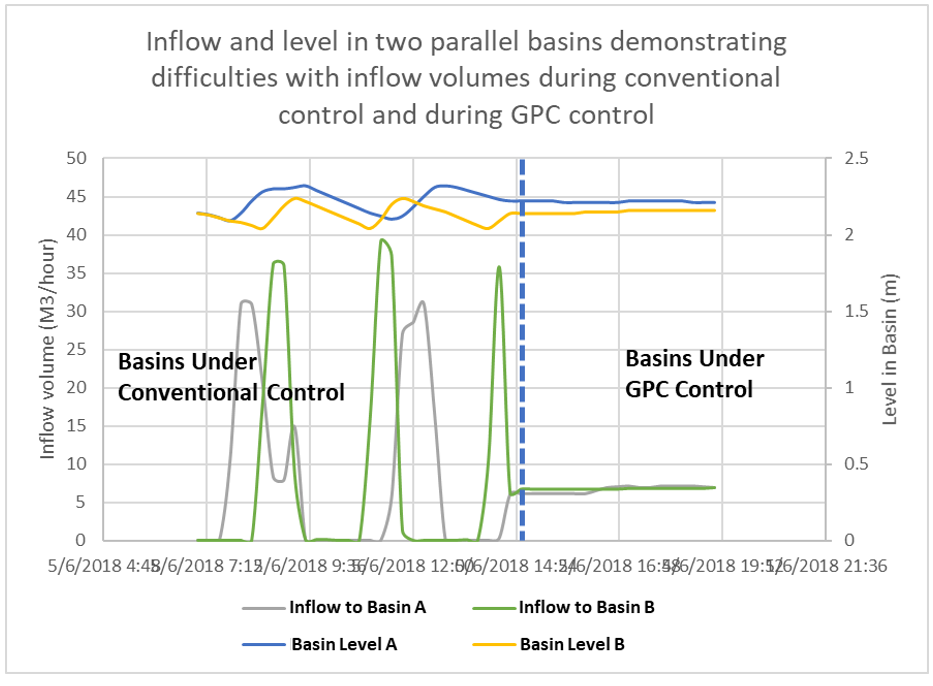
Solution:
- GPC will monitor the inflow to all basins and ensure that basins are filled to required levels
- Removes the need to manually balance the system
- Manual intervention increases the risk to supply in emergencies (rules & procedures)
Case Study: Extending Network Autonomy When a Water Supply is Compromised
Problem:
Security of supply: can network autonomy be extended when the supply becomes compromised (like in a pollution or drought event) and the amount of water available for use is drastically reduced?
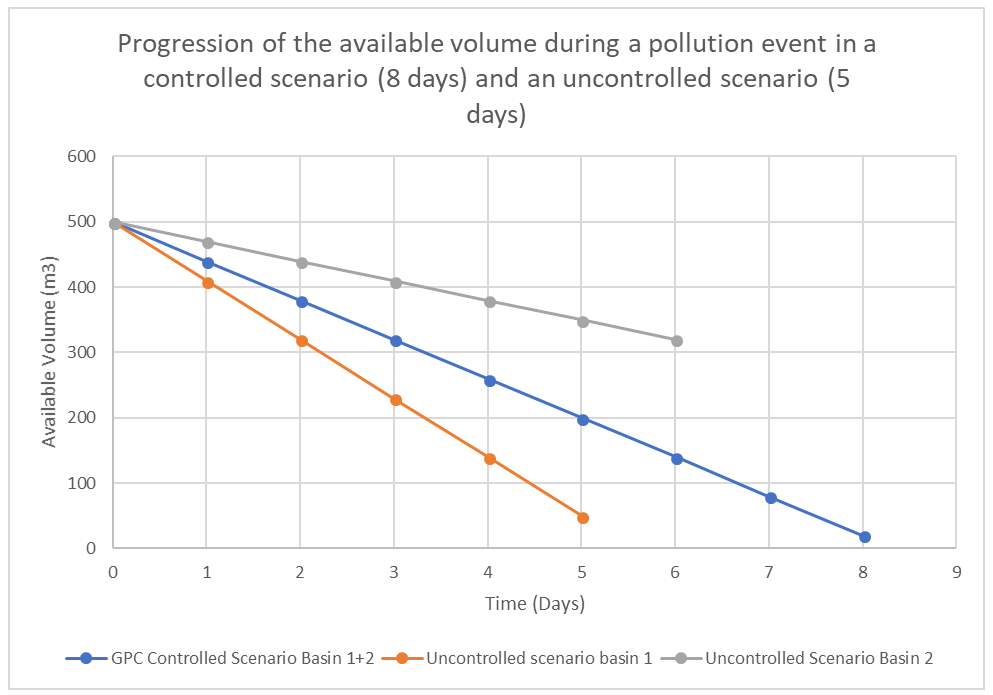
Solution:
By using an automated and predictive approach, the supply can be maintained much longer by more efficiently distributing the available water (in this example from 5 to 8 days) giving network administrator has more time to take remedial action or organize emergency supplies.





